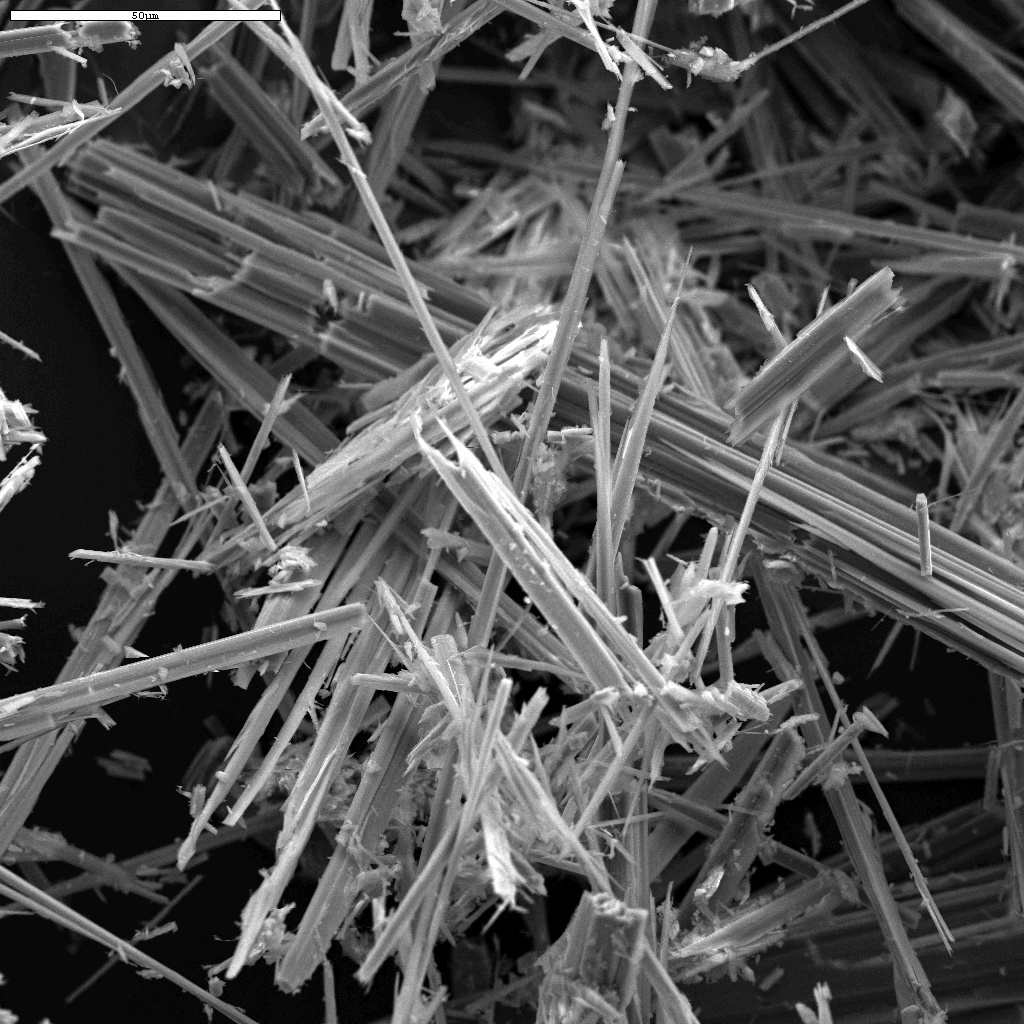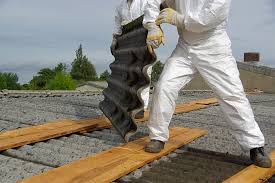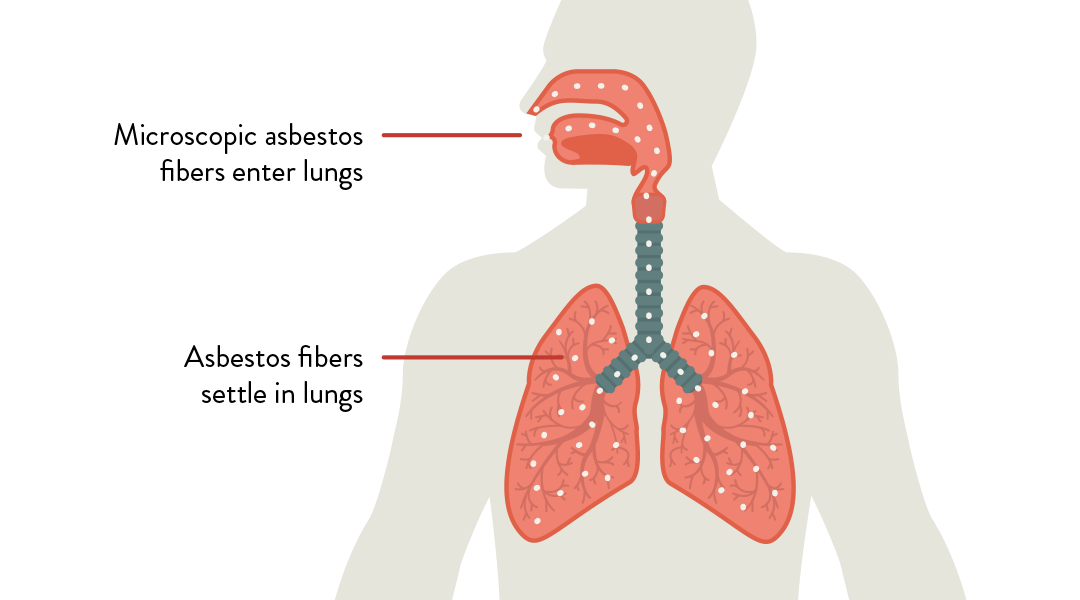The Dangers of Asbestos
Asbestos
Asbestos Cement Roofing and Siding
Despite its desirable qualities, the use of asbestos in building materials has proven to be a dangerous practice. This naturally-occurring, fibrous rock has heat and fire-resistant properties. But the long term effects proved to wreak havoc on our health.
Asbestos and Portland Cement
Commonly used in homes and buildings from early to mid 1900, asbestos siding was the choice material for manufacturing shingles, panels for roofs, and panels for walls. Banned in the 1970’s, the National Board of Fire Underwriters, with its initiative to eliminate the fire hazards of wood shingles, was influential in the public’s acceptance of asbestos-cement roofing. When mixed with Portland cement, the duo provided durability and was fire-resistant. Similar to the pliability of pottery clay, the chemistry of Portland cement and asbestos aids in the durability of building materials. Materials used for ceiling and floor tiles, stucco, and plaster included this mixture.
Asbestos-cement based materials quickly became popular in the construction industry. Roof shingles were available in a natural gray color, as well as red and blue-black colors that resembled tile and slate. Shingles were characterized by the shapes and the installation methods. The various shapes include square, rectangular, diamond and scalloped – to name a few. The shapes offered unique styling. Other th an the American style room, the roofing tiles were shaped to imitate clay tiles found on French and Spanish-style buildings. In the late 1930’s, asbestos siding in the shapes of individual square, rectangular, and hexagonal shingles were popular. The architectural possibilities were endless!
an the American style room, the roofing tiles were shaped to imitate clay tiles found on French and Spanish-style buildings. In the late 1930’s, asbestos siding in the shapes of individual square, rectangular, and hexagonal shingles were popular. The architectural possibilities were endless!
Problems with Asbestos
Asbestos-cement products, once deemed a miracle material, remained popular until the 1970’s when the U.S. Environmental Protection Agency (EPA) began regulating asbestos-containing materials. In 1989, the EPA banned the use of asbestos in new building products. Note: Homes built prior to this year, may contain asbestos-related products. The health concern is the fibers can cause cancer if inhaled. This asbestos-related cancer can occur when asbestos is inhaled and the microscopic fibers become lodged within the outer lung tissue layer known as the mesothelioma. This thin layer of cells protects and lubricates the chest cavity. It causes a sustained inflammation of these cells resulting in harmful scar tissue forming on the surface. This scar tissue lays the foundation for cancerous cells to develop (“Asbestos Exposure”).
The commonly used asbestos-cement siding and roofing is subject to impact damage. The EPA does not consider asbestos-cement products to be easily crumbled or reduced to powder because the cement acts as a binder. However, these products can become friable if they are severely deteriorated or if they have been disturbed with the onset of chipping, sawing, sanding, or grinding. The fibers are then airborne and can be inhaled. As long as the siding remains intact, it poses no health hazards.
Modifying or repair the cement roof or siding should be done with care. It is recommend you contact a certified asbestos abatement professional. For more information, contact your area’s environmental engineer or visit the Forest Service’s Hazardous Substances in Buildings website at this link: http://www.fs.fed.us/eng/toolbox/haz/haz02.htm. An additional reference is to contact your heritage staff and State Historic Preservation Office to determine which alternative siding and roofing materials are acceptable.
Asbestos Cement-Siding – Consider This
Carefully consider all options when you are faced with dealing with asbestos cement siding.
The benefits offered are:
- – Fire, termite and rot resistance
- – Easy to clean and maintain
- – Easy to paint
Cautiously consider the disadvantages. Asbestos cement is:
- – A brittle material that can easily chip, crack or break
- – Harmful if crushed by sawing, sanding, breaking
- – Not easily replaced as it is not readily available
- – Not Repairable
- – Outdated in appearance
 Many manufacturers produced cement siding that looked like asbestos cement siding, however their siding contains no asbestos. So, test first to see if you actually have asbestos in your shingles or siding. Your state may offer free testing or you can expect to pay a fee of $20 or less. Test results can be delivered within 24 hours.
Many manufacturers produced cement siding that looked like asbestos cement siding, however their siding contains no asbestos. So, test first to see if you actually have asbestos in your shingles or siding. Your state may offer free testing or you can expect to pay a fee of $20 or less. Test results can be delivered within 24 hours.
If the test results produce asbestos in your shingles or siding, you’ll need to evaluate the option of asbestos abatement. These options will include the cost of asbestos removal and disposal and the health risks associated with the removal process.
Carefully consider all your options when dealing with asbestos. Not only is making the correct decision critical for safety and health but thorough research is critical in order to put emotion aside and make the right choice. Visit www.abestossiding.org for more information.
Citations
“Asbestos Exposure.” Mesothelioma.com. Web. 24 June 2015. <http://www.mesothelioma.com/asbestos-exposure/#ixzz3dzUA0rbi>.
